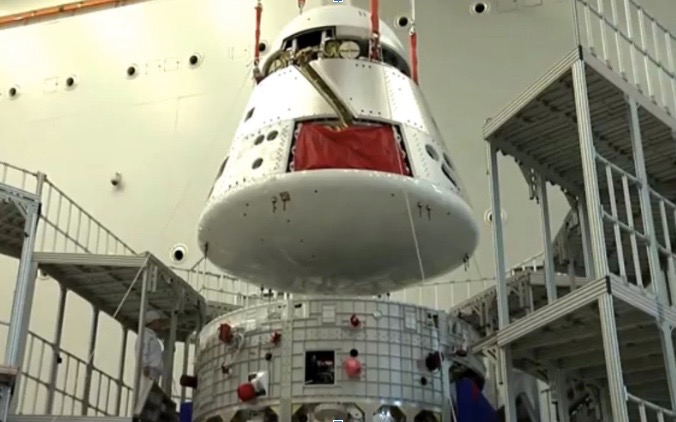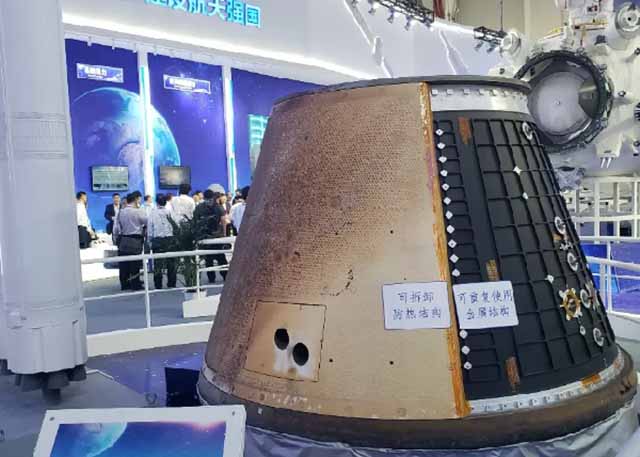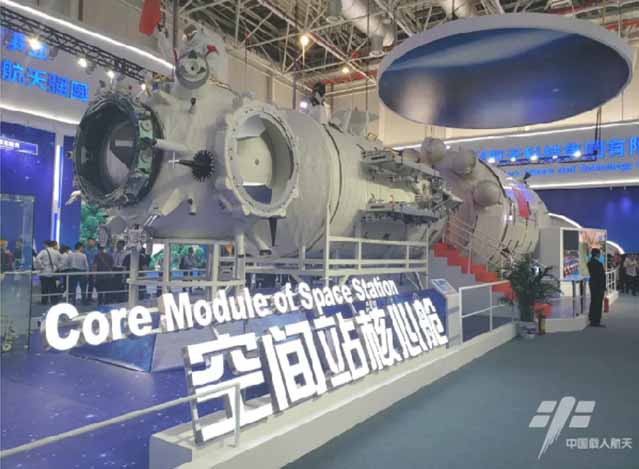China readies its new deep-space crew capsule for 1st test flight
A Chinese next-generation spacecraft for taking astronauts to low Earth orbit and beyond has arrived at a coastal spaceport in preparation for a test flight.
The new spacecraft is designed boost China's capabilities in sending humans into orbit, reduce costs through partial reusability, and allow astronauts to survive the radiation environment and higher-speed reentries of deep-space missions.
The as-yet-unnamed spacecraft is 8.8 meters long (28.9 feet) with a mass at liftoff of 21.6 metric tons (23.8 tons), according to the China Manned Space Agency. It will be capable of carrying six astronauts, or three astronauts and 500 kilograms (1,102 pounds) of cargo.
Related: Photos of China's new spacecraft to take astronauts to the moon

The new spacecraft arrived at Wenchang Satellite Launch Center on Hainan island in the South China Sea on Monday (Jan. 20), and it is due to launch sometime in the next few months.
Like NASA's Orion EFT-1 crewed spacecraft test in 2014, the spacecraft will be sent into a relatively high, elliptical orbit, reaching an apogee of 5,000 miles (8,000 kilometers) before reentry — far beyond that of China's previous human spaceflight-related flights.
The flight will test the spacecraft's performance in orbit, a lightweight heat-resistant coating for reentry, parachute systems and a new airbag-cushion-landing design. Systems such as life support will be absent from the spacecraft for the first flight.
Get the Space.com Newsletter
Breaking space news, the latest updates on rocket launches, skywatching events and more!
The mission will be launched by the first Long March 5B rocket, a variant of the huge Long March 5, which had a dramatic and successful return-to-flight mission in December. The rocket components are due to join the new spacecraft at the Wenchang Satellite Launch Center in early February.
If the new rocket performs well, it can next be used for constructing a modular space station. The spacecraft will carry nearly 10 tons of propellant to make it similar in mass to launching a station module. However, the capabilities of the new spacecraft indicate that China is already looking beyond low Earth orbit to eventual missions to the moon — and potentially beyond.
It is not known when the new crewed spacecraft is expected to enter service. The test launch could come as early as April, based on launch-preparation times for previous Long March 5 rockets.
The Long March 5B will be capable of lifting the new crewed spacecraft to low Earth orbit (LEO). A new launcher would be required for missions into deep space, or rendezvous with another craft in LEO before heading to the moon.

China became the third country to independently launch astronauts in 2003 when Yang Liwei orbited Earth in the Shenzhou 5 spacecraft.
The roughly 8-metric-ton (8.8 ton) Shenzhou, which can carry three astronauts, has been used for all six of China's crewed missions so far. It consists of three components: a return capsule and separate propulsion and orbital modules.
Like NASA's Orion, the new spacecraft consists of two components: a crew module and service module.

In another upgrade over the Shenzhou, the new crew module will be partially reusable, while the spacecraft as a whole features a modular design that will allow it to be constructed to meet different mission demands.
"In the past, the thermal protection of Shenzhou spaceships were integrated with the metal structure inside, so the entire thermal protection structure could not be disassembled, and capsule was not usable after coming back to earth," Yang Qing, chief designer of the new manned spacecraft of the China Academy of Space Technology, told CCTV.
"This time the heat protection on all our cabins has been turned into pieces, which is very convenient to disassemble." Testing such reusability-related technologies is another goal of the upcoming launch.
"To ensure a sustainable development of the whole industry in the future, cost reduction is still a very critical factor, so being reusable is a better way for us to reduce the cost," Yang said.
The research team will evaluate and analyze the state of the spacecraft after its return. After verifying the key technologies, it will move on to the development and functional verification of the entire system, and prepare for human spaceflight, according to CCTV.
- Watch China simulate a Mars landing for 2020 mission to the Red Planet
- Russia and China Are Teaming Up to Explore the Moon
- China's moon, Mars and space station missions may be facing delays
Follow us on Twitter @Spacedotcom and on Facebook.

Join our Space Forums to keep talking space on the latest missions, night sky and more! And if you have a news tip, correction or comment, let us know at: community@space.com.

Andrew is a freelance space journalist with a focus on reporting on China's rapidly growing space sector. He began writing for Space.com in 2019 and writes for SpaceNews, IEEE Spectrum, National Geographic, Sky & Telescope, New Scientist and others. Andrew first caught the space bug when, as a youngster, he saw Voyager images of other worlds in our solar system for the first time. Away from space, Andrew enjoys trail running in the forests of Finland. You can follow him on Twitter @AJ_FI.









